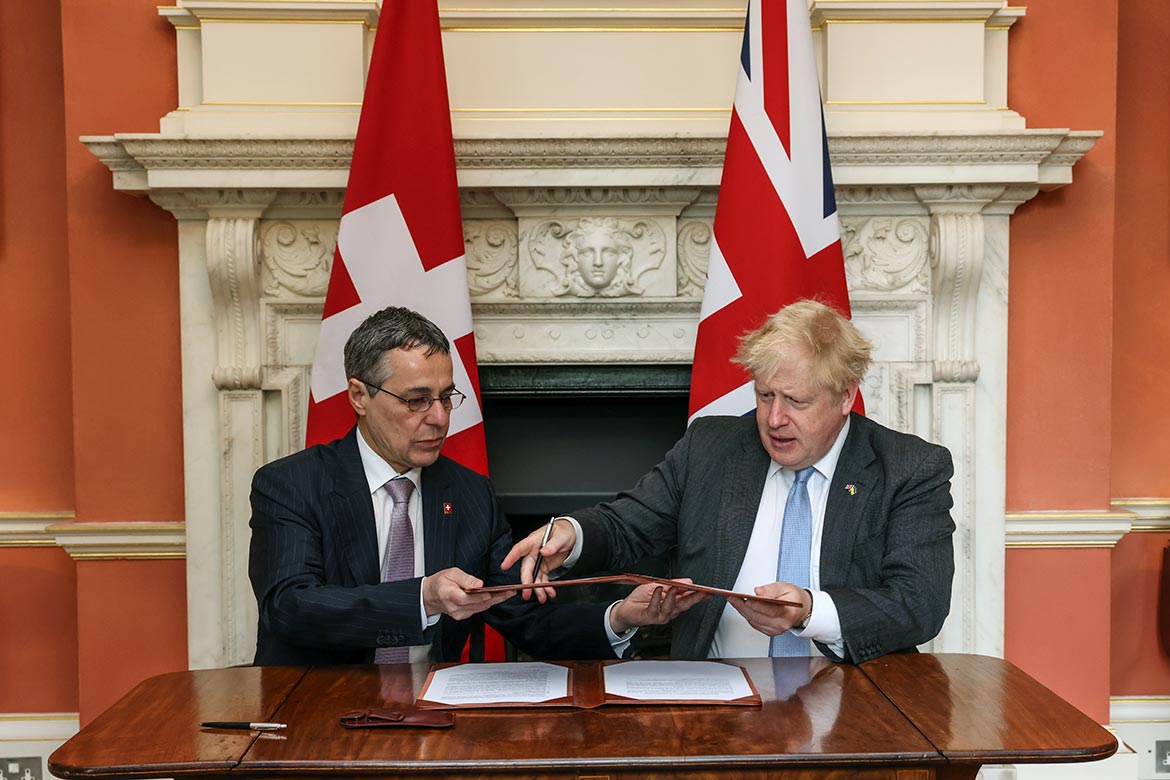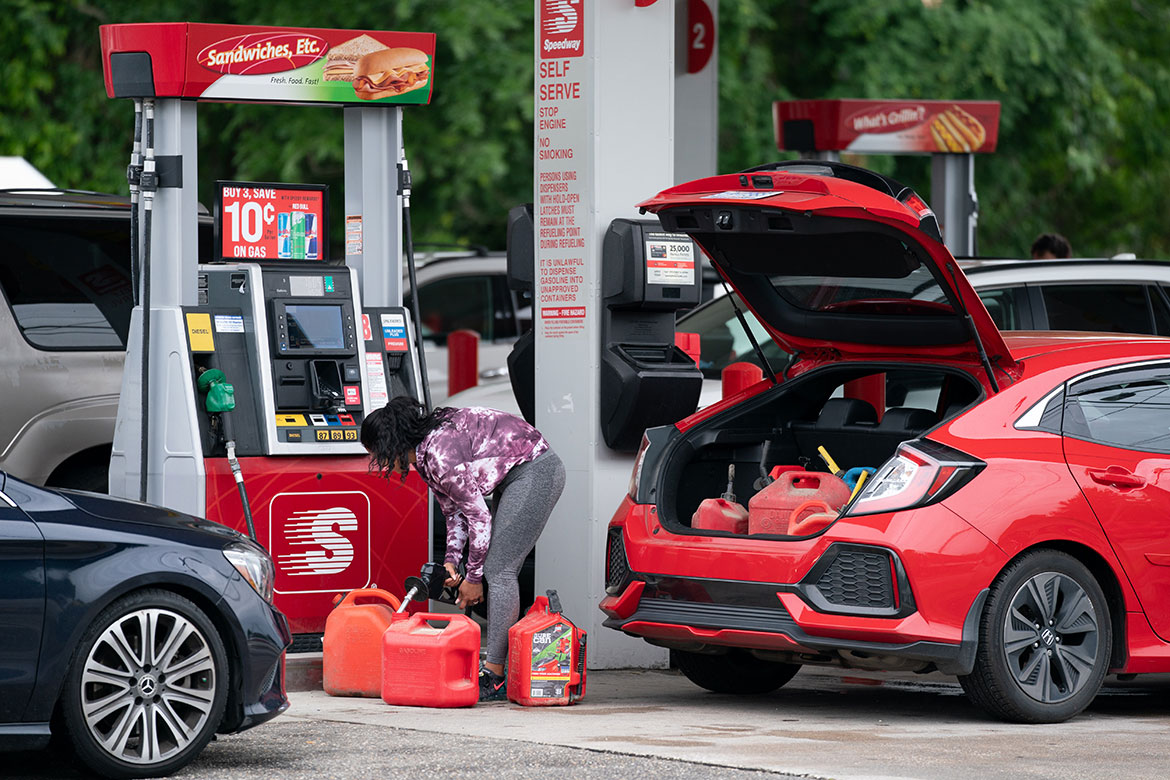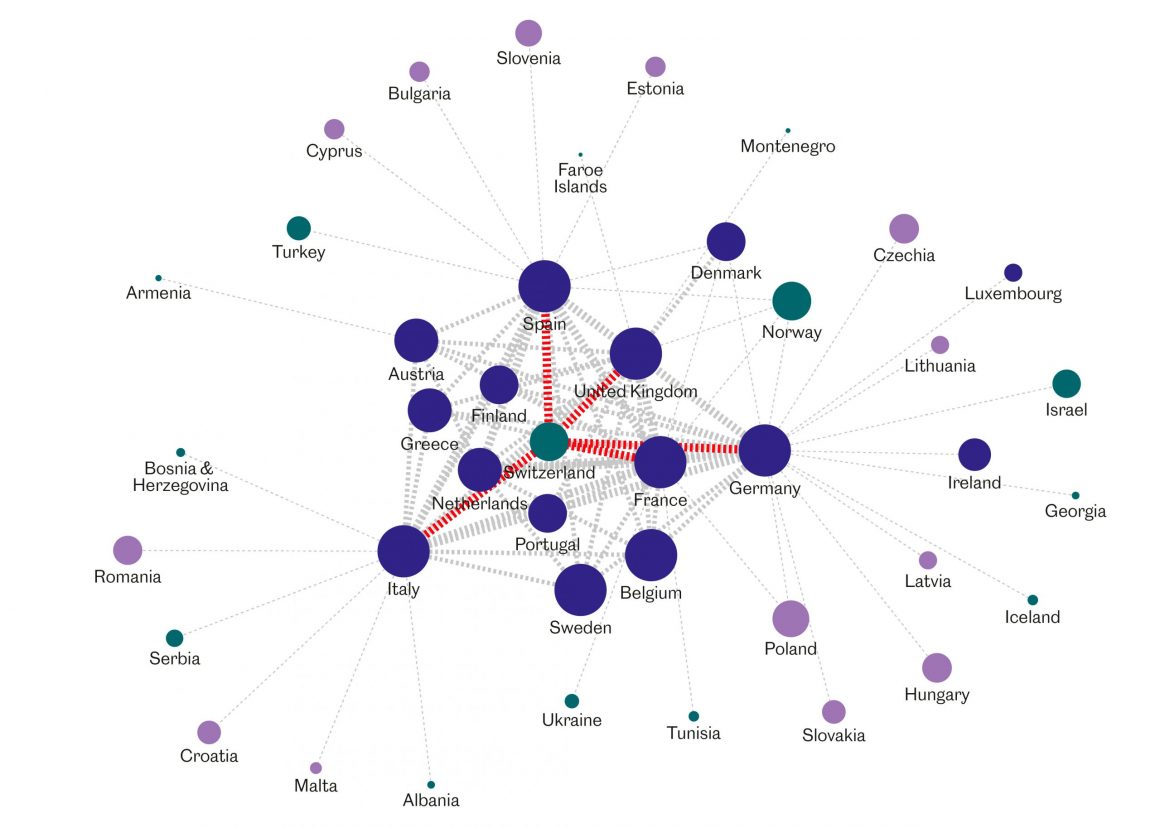Switzerland’s wild-west underground
Who owns the Swiss subsoil and how should it be used? The legislation is unclear. With underground usage subject to increased competition, it’s clear that a problem is emerging.

There’s ‘gold’ in them thar depths … and many want to enrich themselves with it. This can lead to all kinds of conflict – some of it fruitful. | Image: 2. stock süd
Switzerland rightly boasts of being an underground champion, thanks to the world’s longest intercity railway tunnel (Gotthard), the world’s largest ever underground scientific experiment (part of the LHC at CERN lies in Switzerland) and the multitudinous underground pipelines and bunkers that earn the Alps their comparison with Swiss cheese. But’s it’s a champion only as far as engineering is concerned, because in terms of governance, the Swiss subsoil looks more like a “modern-day Wild West”, according to Olivier Lateltin, the head of the National Geological Survey at Swisstopo. “It is little known and under legislated. The rule that sometimes prevails is first come, first served …”.
The authorities are therefore a little unsure as to how to manage what’s under their feet. “Unlike other nations, Switzerland has hardly explored its depths because there are no known oil deposits of interest”, explains Nathalie Andenmatten, who is in charge of geothermal policy for the canton of Geneva. “During the Second World War, France and Germany studied their subsoils for strategic reasons, with the aim of energy self-sufficiency”.
This lack of knowledge concerns not only the very depths but even parts less than thirty metres from the surface: only a few large cities have a really precise knowledge of their pipeline network. Everywhere else, the information is either non-existent, incomplete, or difficult to obtain. “The underground land registry is like a no man’s land”, says Lateltin. To find information, you often have to turn to a series of different entities, such as telecommunications operators and local utilities companies”.
Fragmented legislation
In addition to spotty knowledge, the legislation is also extremely vague. Switzerland has no federal law specific to the subsoil. Article 667 of the Civil Code does attempt to settle the question by extending the ownership of land “to the full height and depth useful for its exercise”, such as the subsoil level from which thermal energy is extracted for central heating. (Roman law, by contrast, attributed unlimited ownership to the centre of the Earth.) In summary, “at present the question of the private and public domain is not resolved as far as the subsoil is concerned”, says Thierry Largey, a specialist in land planning law at the University of Lausanne.
The situation is not without its practical problems either, especially as buildings grow taller and taller, requiring increasingly deep foundations. “This is particularly the case when, in certain land profiles, the foundations need to extend beyond the vertical column of subsoil located directly under the plot itself”, Largey says. “Is there an obligation for the owners to seek permission from their neighbours, or rather from the local authorities?” At the same time, the development of geothermal energy means an increasing number of shafts are being drilled – as deep as 300 metres – for heating individual dwellings. This concomitantly increases the ‘useful’ depth to which ownership can be exercised.
Outside of privately owned plots, the Swiss subsoil is public property, much in the same way as lakes, snow-covered peaks and areas unsuitable for agriculture. The cantons exercise their sovereignty over the use of these areas through administrative law. “However, subsoil management remains very sectoral”, says Largey. There is no overview or harmonisation among the cantons. “Some cantonal laws date from the 19th century, while others have recently been revised”. Some cantons even lack explicit legislation in specific applications, such as geothermal energy. On the federal level, subterranean exploitation is not expressly mentioned in land planning legislation. Despite this, some coordination of the exploitation of underground resources remains possible, thanks in particular to planning or allocation tools available at different levels (both federal and cantonal).
Increased competition
It is only in recent years that specialists have sounded the alarm, because until lately the lack of legislation and knowledge caused few real problems. In the wake of urbanisation and the development of new technologies, specialists have become concerned about increased competition among underground exploitation projects. This could lead to conflicts and an unsustainable use of resources. Underground spaces have a specificity: once built, they can hardly undergo any change of use.
The uses of the Swiss subsoil can be classified into four main categories: extraction of raw materials (mainly gravel and sand), management of groundwater (which covers 82 percent of needs), construction (including travel and communication) and energy (production and storage). “Conflicts in the use of the subsoil can occur everywhere, but it is especially in urban agglomerations that the situation is likely to become tense in the coming years”, says Stéphane Nahrath, a professor at the Swiss Graduate School of Public Administration in Lausanne and a researcher on National Research Programme 68 “Sustainable use of the soil as a resource”.
One example is groundwater becoming exposed to pollution. But, above all, it’s the fact that an already overcrowded subsoil means not everyone will be able to drill their own geothermal shaft. In Lausanne, for example, owners of property located above the route of the future M3 underground railway line will not be able to use geothermal heat at all. Which raises the question: will they be compensated? “There is currently no legislation that allows for a decision”, says Nahrath. The rise of geothermal energy – encouraged by the Energy Strategy 2050 – is already in conflict with transport tunnel projects.
Potential problems don’t stop there either: other initiatives are looking at the storage of CO2, natural gas and radioactive waste in underground warehouses and at the laying of high voltage lines. The chronic lack of building surfaces is encouraging architects to look more and more at extending building depths, which also means buildings benefit from excellent thermal properties. Large infrastructure projects are also on the horizon, such as ‘Underground Cargo’, a fully automated, networked freight tunnel project, and ‘Eurotube’, which aims to develop high-speed metal-tube transport technology, in which the two Federal Institutes of Technology are participating.
The judges will decide
“Many of these projects concern the future”, continues Lateltin. “But it is now necessary to put in place the tools to manage the underground space”. Nahrath agrees with this: “We must coordinate land planning with long-term subsurface management. We need to establish plans, define zoning and design usage scenarios, in the same way we capably do for the surface. If we do not clarify the legislation for the subsoil, it will emerge out of the case law of the Federal Court in the coming years, because litigation will probably multiply. What we do know in this field is that it’s always better to think ahead and as quickly as possible”. If Switzerland does not flesh out its legislation, courtroom judges are going to decide how we manage our subsoil – cutting out the experts.

Excerpt from the underground land register for the Place de la Sallaz in Lausanne: District heating, public transport, electricity, multimedia traffic management, telecommunications, drinking water, gas, sewers, and access tunnels. | Image: 2. stock süd
In Geneva, Andenmatten sees another problem. “If we do not plan the use of the subsoil better, we risk hampering the development of certain technologies in the future”. In the case of geothermal energy, Switzerland has seen an increase in the number of shallow geothermal shafts in recent years, up to around 300 metres deep. They may be well suited to individual houses, but much less to the needs of inner-city buildings, where the subsoil is already congested. These buildings really need collective systems that extract geothermal energy from groundwater or medium-depth shafts.
“If the authorities continue to allow individuals to drill their shafts and shaft fields independently without planning, it will no longer be possible to envisage collective systems in these neighbourhoods”, she says. She also thinks that disparities in cantonal legislation – and in some cases the absence of any appropriate legislation – could make it very difficult to implement major geothermal projects. “The data to be provided is different in each canton: something will be prohibited in one place but allowed in another. In short, it’s a disincentive to set up projects. For medium-depth geothermal energy to develop in Switzerland (between 300 and 3,000 metres), it would be necessary to develop and harmonise inter-cantonal practices”.
Law in 3D
Geothermal energy is not the only sector from which there are calls for harmonisation, as many underground projects will cross cantonal borders. The solution may come at the federal level with the second revision of the Law on land planning (LAT 2), which is set to involve the consideration and design of land planning in three dimensions. “It would obviously be desirable for LAT 2 to detail underground land use planning”, says Marianne Niggli, who is the President of the Swiss Association of Geologists. The Association is organising a symposium in October 2018 to discuss the content of the future legislation with geologists, urban planners, entrepreneurs and specialists in land planning (see here for more information, in French and German only).
In the meantime, projects conducted by Swisstopo in cooperation with the federal and cantonal authorities could greatly improve knowledge of the Swiss subsoil (see “Mapping Switzerland under ground”). “We are setting up various databases on underground structures of national interest, such as deep boreholes and seismic lines”, says Lateltin. “We want to establish standards for the description of geological data in Switzerland and to help the cantons to make them available, especially to planners and project managers. I believe that in ten years’ time, our geological models of the subsoil will be effective for the main towns on the Swiss Plateau”.
Will this data facilitate the introduction of new legislation? Perhaps. “But neither should there be too many regulations which may potentially exert undesired effects”, says Niggli. Indeed, a number of uncertainties remain regarding future projects. In her view, new standards should be introduced gradually, in line with advancing knowledge. At the same time, subsoil specialists are demanding the establishment of expert groups, the drafting of technical standards and the dissemination of best practices. These are the conditions necessary for the rational and measured exploitation of the very foundations of our nation.
Geneviève Ruiz is a freelance journalist based in Nyon (VD).




